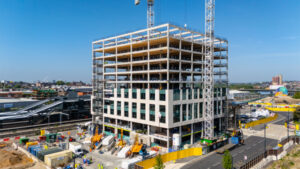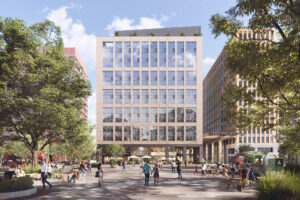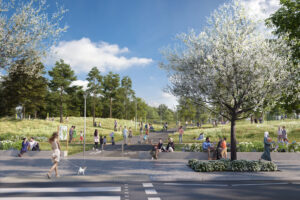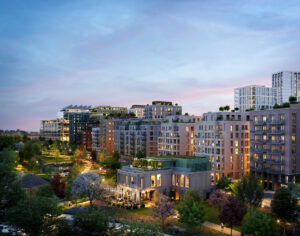Jonathan Joseph
Real estate wasn’t in my blood – I fell into it, needing a job – but loved it from Day 1.
My parents founded and ran a successful chain of bookstores, initially in South Africa and then in the UK. I was never invited to join the business (who can blame them!!) – but I needed to work.
After graduating, I joined a large, family office in South Africa, which included a property development company, learning the ropes from the ground up. I had become increasingly involved with the anti-apartheid movement in South Africa. One day, a senior prosecutor advised my father that I might be happier living elsewhere. Fortunately, I held a British passport, and in 1971, I moved to England.
As luck would have it, the developers I had worked with in South Africa were equally concerned about the country’s future and decided to relocate to the UK as well. I continued working with them for almost a decade, gaining extraordinary exposure to the UK property market throughout the turbulent 1970s.
By the end of the decade, driven by youthful ambition and a deep passion for real estate development, I set out on my own. I was fascinated by every stage of development — conceiving the idea, collaborating with professionals, solving complex planning and commercial problems, and creating something enduring – that I wouldn’t be ashamed of when I drove past it subsequently.
As my experience grew, so did my appetite for more challenging projects. I became drawn to regeneration work — projects that others often avoided because of their complexity.
One of the first major regeneration projects I took on, alongside my then partner (and still good friend) Edward Bellhouse, was in Glasgow during the mid-1980s. It took ten years to complete the first half of the development, and much of that time was spent actually working in Scotland, getting under the skin of the culture and communities. The site was situated on the River Clyde in central Glasgow, between the main station and the Kingston Bridge motorway. We acquired nine acres of derelict, vacant properties, and with the support of an innovative Japanese construction company called Kumagai Gumi, we secured planning permission to develop a 1 million-square-foot office complex. Much of which had been pre-let and completed by the time we sold our interest.
After completing that project, along with others in Edinburgh and Fulham, I was invited to compete to become the partner of Railtrack PLC, to create something even more ambitious that would complement Brent Cross Shopping Centre.
While Brent Cross is famous for its shopping centre on the north side of the North Circular Road, on the south side, sat 350 acres of underused land, surrounded by infrastructure, but largely ignored.
I put together an amazing team of architects and engineers in the first months of the 21st Century, and we began working on the conceptual and planning stages of what would become the Brent Cross Cricklewood regeneration scheme – one of the largest in the UK at the time, effectively creating a new town. My team secured the initial planning permissions in 2010, but it took nearly another decade to reach the next stage, where the owners of the shopping centre decided not to take part in the development of the southern lands. Barnet Council tendered the opportunity to other developers and I helped bring in Argent Related to form a 50/50 partnership with Barnet Council to take forward the future development.
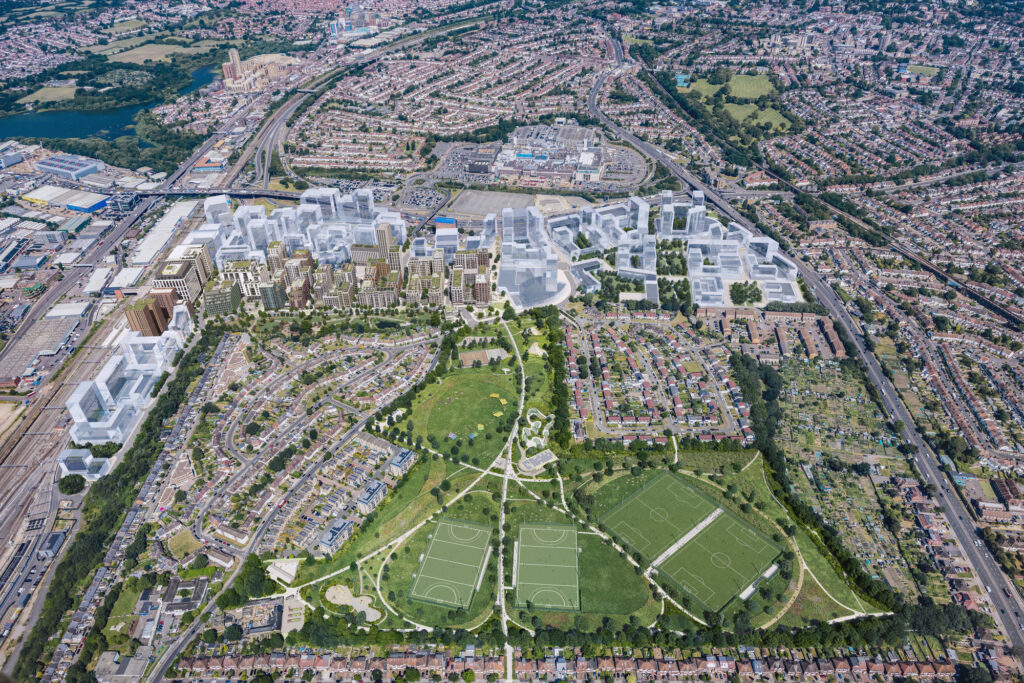
What you see taking shape today is based on the 2D masterplan my team and I created — but it’s grown into something far beyond what I ever could have imagined. Fresh from their ongoing triumph with the Kings Cross development, Argent Related and Barnet are in the process of creating something truly extraordinary.
On completion, Brent Cross Town will offer:
- Approx 10,000 homes
- Workspace for 25,000 people
- A lively new high street with shops, restaurants, and leisure spaces
- Schools, community hubs, parks, and world-class sporting facilities
- 50 acres of green space for everyone to enjoy
And thanks to the brand-new Thameslink station, Brent Cross Town will be connected to central London in just 12 minutes.
With the Brent Cross development safely in the hands of Barnet and Related Argent, I was eager for a new challenge — and the revival of our dying high streets felt like exactly that. I strongly believe high streets must be repurposed as vibrant, welcoming places, with more engaging retail, especially food and leisure experiences, that truly serve their communities. Additionally, by increasing residential housing in these areas, we can create a lively atmosphere, foster pride of ownership, and establish a ready market of consumers. I’m now in my seventh year working with Barnet Council on the first live project to put this vision into action: North Finchley.
It hasn’t been straightforward. Political shifts, local concerns, and tighter financial conditions have made the process complex and time-consuming. But we’ve now submitted our first couple of planning applications, and I’m optimistic that we’ll begin to see real progress in the next few years.
Even after 50 years in property development, I still feel a sense of adventure and serious purpose. Bringing together the local authorities, the communities, the politicians, and the professionals to create something lasting for future generations is what continues to excite me about this work!
Circle Square Q&A
What 3 words best describe you? Curious, warm, unafraid.
If you could offer your younger self one piece of advice, what would that be? Keep going.
What do you consider to be your greatest achievement? A life crammed with wonderful friends and family.
Which person (dead or alive) would you most like to invite to dinner? Sir Sydney Kentridge – now aged 102.
How has age strengthened your advantage? I am not sure it has!
What inspired you to join Circle Square? Nick inspired me to join.



